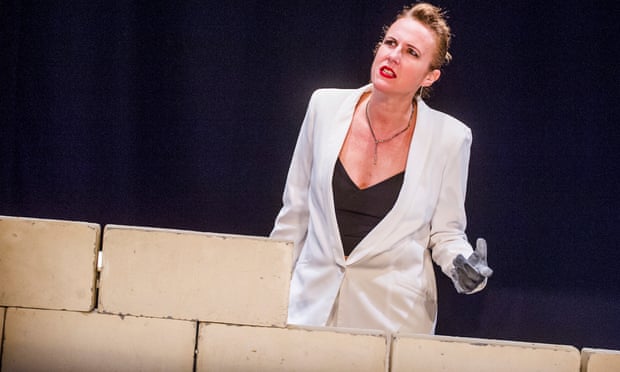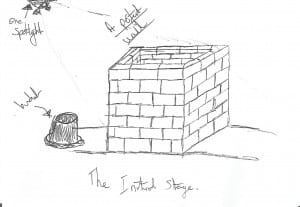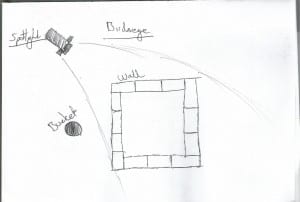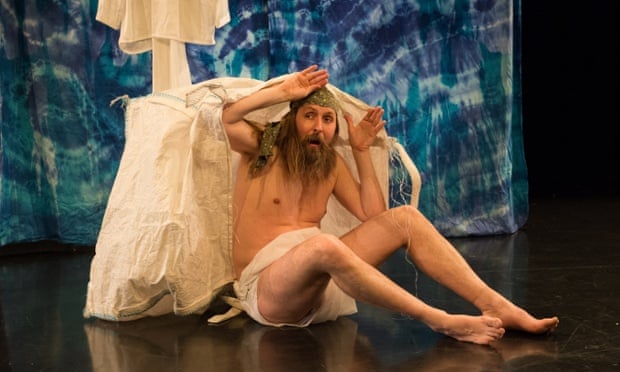THE END IS NIGH!
No, really. It is – 3 years down the fucking drain.
Anyway, I finished my performance and now I have to write this final evaluative piece of garble in order to complete the module.
Post module, I have an abudance of mixed feelings over my performance. I do feel as though it went very well – however I also believe that many things I tried to do could have been improved, played upon and recreated. This last post is a comprehensive look at my overall creative process and a reflection on the final product as a result.
The Process:
At the beginning of the module I wanted to create a piece of performance that surrounded me personally. Originally, my base idea was to explore islamaphobia in Rotherham, I then moved on to wanting to explore my own families history of male anxiety and whether it was hereditary or derived from the social background the victim has come from. Ideas flew around for the first month before I finally realised the similarities in all of my ideas – Rotherham. Rotherham has been my life, I was grown and moulded in Rotherham – by the people who occupy it and by the passion that drives it.

After this, I decided that I would focus on other things that have always followed me in life. This is when I came unto the idea that I would perform my show about my personal recollection of Rotherham and my ambition for acting. It was later that I decided to add in the connections to Billy Elliot and his father and Barry Hines’ Kes, as well as Madame Arcati. 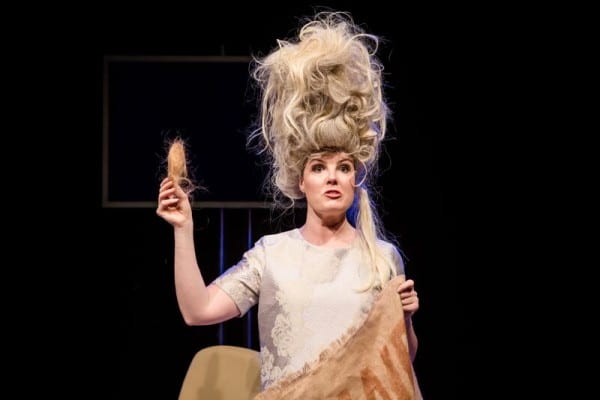
I decided early, as my other blog posts can show, that I could deliver my solo performance with a medium that most represented the ambition of the population of Rotherham, people whom will always only be labourers. Taking inspiration from Ursula Martinez’s show Free Admissions I saw the benefits of such an act when delivering personal information as it became a metaphorical spectacle – alongside the ironic juxtaposition of the ambition of a life in theatre opposed to the action on stage of building a wall.
 In order to add theatrical elements in to my performance I decided to use typical show music during my performance when acting i.e. for Madame Arcati, Billy Casper and Billy Elliot and his Father. I used a single spotlight in order to pinpoint where the audiences attention should be focused – winking towards theatricality. It was with these elements that the action of brick laying should juxtapose – creating anti-theatricality from regular theatrical devices. I also decided to make the brick laying less authentic by using Floral Foam blocks and Pollyfilla as cement.
In order to add theatrical elements in to my performance I decided to use typical show music during my performance when acting i.e. for Madame Arcati, Billy Casper and Billy Elliot and his Father. I used a single spotlight in order to pinpoint where the audiences attention should be focused – winking towards theatricality. It was with these elements that the action of brick laying should juxtapose – creating anti-theatricality from regular theatrical devices. I also decided to make the brick laying less authentic by using Floral Foam blocks and Pollyfilla as cement.
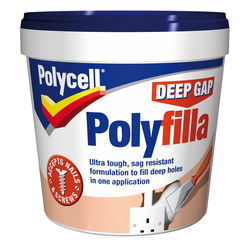
My piece began as a ‘normal working class day’ working on the construction site. I opened with me having a break – eating a sandwich and drinking a bottle of Ribena. I wanted to use these moments to dissipate any preconceived notions the audience had about my show – with the hope that it would abolish all their expectations. The further my performance went – the closer I got to my final goal of learning the audience of Rotherham and what it’s like to grow up their with other ambitions.
As the show progressed, I dove in to reenacting Madame Arcati in Blithe Spirit, trying to reperform Billy Elliot’s iconic first dance in front of his father and finally, the story of letting Kes go free for the first time. I wanted to tell the story of Rotherham and Yorkshire my material, as well as the state of the working classes in England at the time – especially in the north.
The Performance:
Probably the most important aspect of my show was the action of bricklaying – although this went really well with my concept, I felt as though my wall didn’t reach it’s full potential so neither did the show in that respect. I wanted to fulfill the walls full height during my performance but because I believed I was strapped for time I ended up leaving it only half built – if I were to do this again I would probably ask for a longer performance period where I could add in more material about my experiences with Rotherham and my acting ambition – as well as performing certain characters for longer – by doing this I would have hopefully created an even deeper meaning to my words.
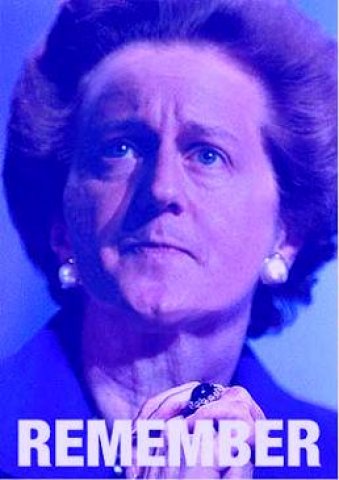
A part of my show that I thought worked well was the penultimate speech when I am talking about Billy Casper and the story of Kes, the song Billy, Don’t Be A Hero is playing whilst I say the line “And it flies off, and comes back. Because he’d trained it. And the story isn’t about a bird – fuck the bird, man – it’s about growing up in Yorkshire, in Barnsley and adapting to life, finding a way to get through it.” which seemed to add a near Churchill-esque feel to my show, as though I was rallying the troops for one final fight against the social barriers and restrictions that have been set up by decades of austerity caused by Conservative governments (about the northern equivalent to hell and it’s demons, with Thatcher, the devil, at the helm) and the privatisation and selling off of Britain’s main trading attributes – Steel and Coal.
My main surprise whilst performing the show was the reaction that the audience had whilst I started telling my – what I thought were badly – written jokes and comments. I was especially surprised to see that the audience were behind me in my thinking – with particular reference to my site-specific joke (Ok, I knew that one was probably going to be funny). The audience recognised the nostalgia that I was trying to play on throughout my performance as well as the story I was trying to tell about Rotherham – they just seemed to get it. I believe that when i had the audience on my side – I was unstoppable and the show was made from the off. I believe it was an assertion that my overall concept worked.
Overall, the creative performance for this module has shown me my strengths in acting and devising and how a show can be formulated from personal experiences in order to tell stories about the ‘bigger picture’. I enjoyed creating a performance as an individual as well as the time I spent with other students in order to further improve our own work – often giving each other small, significant ideas that could completely change our own views about our shows. I would love to revisit this performance in the future and create a show that was full of anecdotal moments about my upbringing, my experience with the arts and with Rotherham, a small Yorkshire town, twinned with St. Quentin, France, whose beauty is found in the grottiest of it’s alleys.
On the other hand,
THANK FUCK IT’S OVER.
I’m Out.
 In order to add theatrical elements in to my performance I decided to use typical show music during my performance when acting i.e. for Madame Arcati, Billy Casper and Billy Elliot and his Father. I used a single spotlight in order to pinpoint where the audiences attention should be focused - winking towards theatricality. It was with these elements that the action of brick laying should juxtapose - creating anti-theatricality from regular theatrical devices. I also decided to make the brick laying less authentic by using Floral Foam blocks and Pollyfilla as cement.
In order to add theatrical elements in to my performance I decided to use typical show music during my performance when acting i.e. for Madame Arcati, Billy Casper and Billy Elliot and his Father. I used a single spotlight in order to pinpoint where the audiences attention should be focused - winking towards theatricality. It was with these elements that the action of brick laying should juxtapose - creating anti-theatricality from regular theatrical devices. I also decided to make the brick laying less authentic by using Floral Foam blocks and Pollyfilla as cement.

